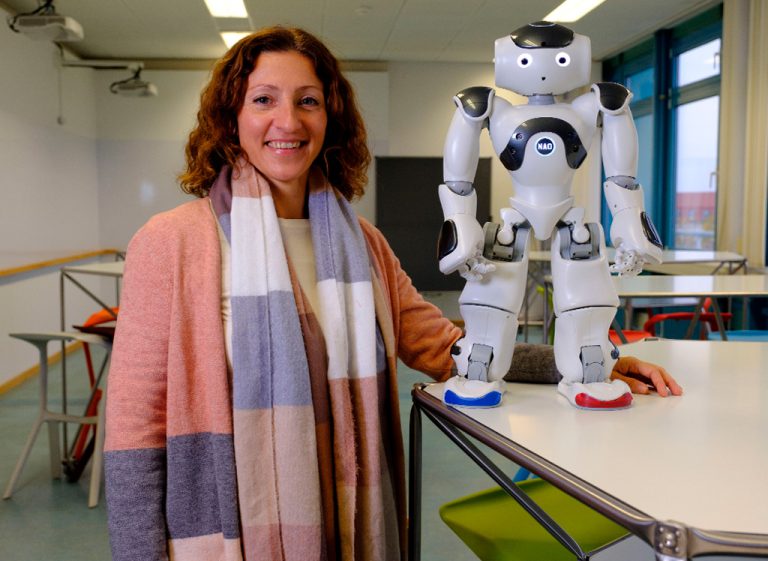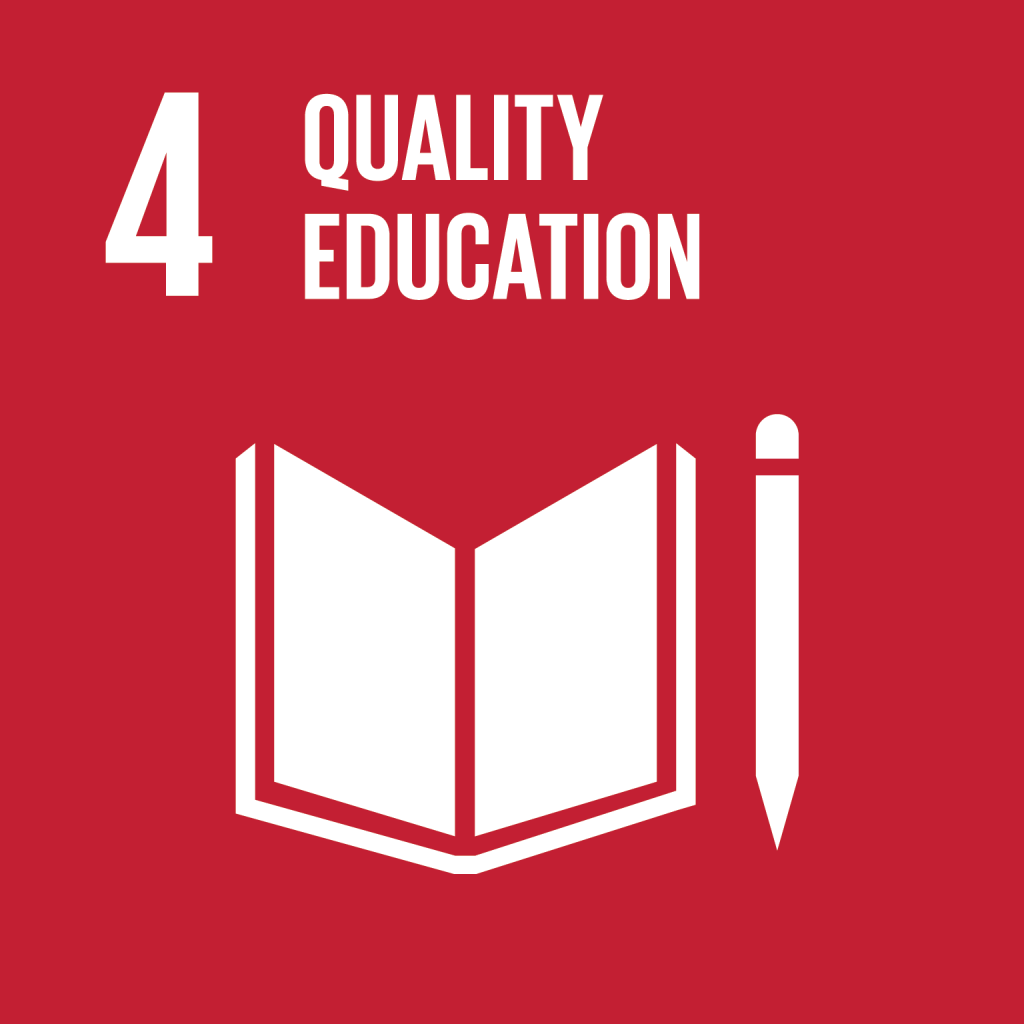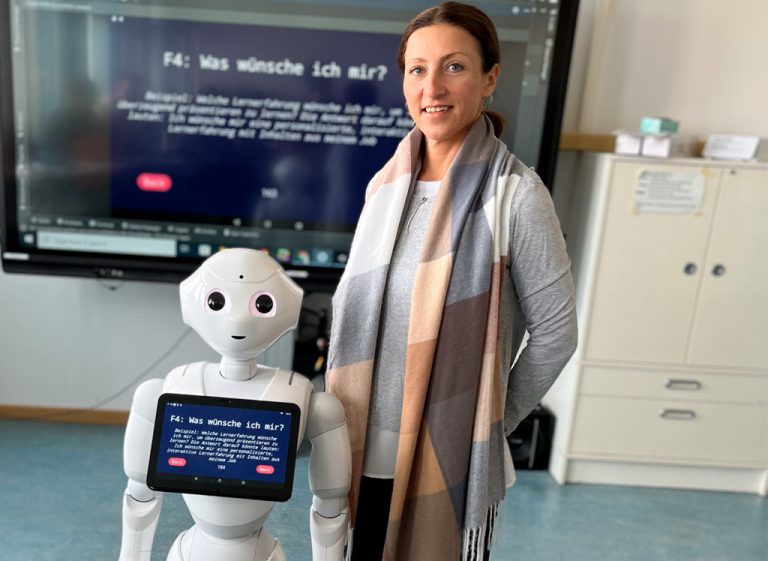Robotics and AI in education: perspectives for application. Interview with Professor Ilona Buchem (Part 1)
18 July, 2023 La professora Ilona Buchem amb el robot Nao
La professora Ilona Buchem amb el robot NaoThe Educational Trends and Innovation Observatory at the eLinC interviewed Professor Ilona Buchem of the Berliner Hochschule für Technik (BHT, Berlin University of Applied Sciences and Technology), who talked about the different possibilities for using generative AI in the classroom. We will be discussing the benefits of AI in education and the future of robots in this post.
Dr Ilona Buchem is Professor of Media and Communication at the BHT, where she is head of the Communications Lab. She graduated in Applied Linguistics from the University of Warsaw (Poland), Concordia University (WI, USA) and Duisburg-Essen University (Germany). She studied Educational Sciences at the Humboldt University of Berlin, and obtained her PhD in Business Education in 2009. Her research and teaching focuses on the interactions between ICT, digital media and society, and she actively works in the classroom with emerging technologies including robotics and gamification-based pedagogies. We talked to her online to find out her thoughts on the future of artificial intelligence (AI).
The benefits of artificial intelligence applied to education
Generative AI is a topic that seems suddenly to be everywhere. It is an interesting subject that is, to some degree, transforming education today. Professor Buchem says she trusts the mindset and goals of the people who are going to apply AI in education, including both educators and other specialists involved in the process. It is at the point where educators can really decide how to apply it, creating a space for using these tools both in a safe and a critical way, in order to discuss issues such as trusting what the AI is creating. AI joins other emerging technologies which, according to Buchem, can be used “to change transform education, to make it more accessible to everyone and adapted to our individual needs, and to go beyond the borders of the classroom in traditional settings”.

The future of robots with artificial intelligence in the classroom and in our everyday lives
The combination of robots and artificial intelligence has vast potential. Professor Buchem believes that social robots and humanoid robots will open up new horizons, but there are many interesting applications in both the classroom and everyday life based on the current technology in robotics and its combination with AI. As an example, she points to the work they have been doing in the Communications Lab at her university, using robots as assistants to teachers in the classroom. The professor envisages “using robots as team members in teams of students, for instance, when designing collaborative learning so everywhere where we have groups of students, a robot could not only moderate the group work, but also be one of the team members, maybe presenting a new perspective or adding some new input”. Buchem anticipates robots becoming more affordable in terms of cost, but also more accessible in terms of the skills needed to program them. She believes that one day it will be very easy for teachers and students to programme robots, as “there will be interfaces and environments enabling everybody to do it in a very easy way. And if this will be so and everybody could afford a robot one day, then maybe every student could have a robot as a personal assistant.” These inventions could be used in different areas. A robot could act as a companion, as a social agent to express facial emotions, or they could even physically move, providing considerable help in terms of accessibility.

Reflection
Generative AI still has a great deal of room for improvement, and a lot of potential provided that it is used appropriately. One of its major contributions is that of helping people develop ideas that they would otherwise be unable to bring to fruition. Improvements to prompting – giving AI commands to obtain a result – could allow someone who is not particularly skilled in drawing to produce an idea using tools for artistic creation such as Midjourney or Adobe Firefly.
The latest news on robotics from companies such as Tesla and Apptronik suggest that considerable breakthroughs are being made in the field of autonomous robots. The combination of autonomous robots and generative AI in the classroom offers a glimpse of the potential for their use as learning assistants. AI-enabled robots could be used in multifaceted ways, helping with both cognitive tasks and emotional aspects in the field of learning and in everyday life. In Japan, where the ageing of the population is a serious problem, they have introduced the Pepper robot to carry out social and emotional tasks, in an initiative that other countries have since followed. Meanwhile, the small NAO robot helps students in schools. The cognitive evolution that the development of generative AI can bring to the world of robotics is the gateway for a new generation of assistants designed to make people’s lives easier. If the appropriate work is done on their abilities, it opens up a wide range of opportunities, including helping people with special needs in terms of their access to education.
This report supports United Nations Sustainable Development Goal (SDG) 4, Quality Education.





